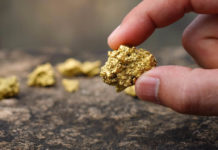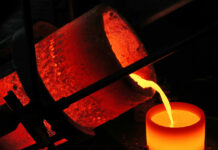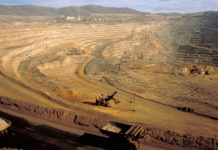
GOLD shares have lagged the metal’s price for the past decade, especially since Covid, but recent performances have shown equities have caught up.
The $1.6bn VanEck Gold Miners ETF (GDX), a bellwether of gold equity performance globally, has trailed the gold price by 40% over the past four to five years. This is largely due to a poor operational track record, with gold miners often missing production guidance — sometimes due to disappointing projects resulting in above-average cost inflation.
At current gold prices, however, this has changed. So far this year, the GDX has gained 40% compared to the 28% improvement in the gold price, which pierced $3,300 per ounce last month.
Gold miners such as Gold Fields, Barrick, Newmont and AngloGold Ashanti are unlikely to be able to contain cost increases, estimated to be 4%-5% on average this year, but Swiss bank UBS is betting on improved margin expansion anyway, owing to the gold price.
That is, until the third quarter when the bank’s analyst Daniel Major expects some full-year production downgrades to kick in, as they usually do. Scepticism, it seems, is enduring, even if competitive gold mining is not.
Companies with stable production (and with no project ramp-ups in the works) are backed to perform better than those with projects, such as the JSE’s Gold Fields, which is ramping up its Salares Norte project in Chile more than a year late.
A survey of 14 so-called senior and intermediate gold companies by Canada’s Scotiabank found that margins were likely to improve so significantly that they would make up for 4% lower average production and a consequent 4%-5% increase in costs.
“Though costs are expected to remain relatively high, we believe the current higher gold price environment, coupled with some relief on input cost pressures and FX, should position companies for further margin improvement over 2025,” said bank analyst Tanya Jakusconek in a report.
In 2025 cash margins are likely to be about 56% better than in 2024 after accounting for total cash costs. This margin would decrease to 39% after factoring in all-in sustaining costs, the capital spent by companies to sustain production.
“Companies that [can] provide evenly distributed operating performance during the year and have no mine ramp-ups, we believe, are better positioned to meet operating guidance (barring unusual events),” Jakusconek said in a report last month.
Locally, Pan African Resources and Harmony Gold have benefited most from the improvement in the gold price. Revenues also benefited from the weak rand due to South Africa’s political uncertainty and outsized export tariffs to the US. The rand gold price hit another record in April of just over R2m/kg, but now at R1.96m/kg.
UBS said there are four other companies with upside exposure to the higher gold price, all listed offshore. Barrick Gold, run by former Randgold Resources CEO Mark Bristow, has been discounted by the market owing to limited value ascribed to its growth optionality, the bank said. But the possible restart of production from its Mali mine, Loulo-Gounkoto — the subject of a stand-off with the country’s government over taxes — would provide “a positive catalyst for the stock”.
Endeavour Mining, which has former Gold Fields CEO and Anglo American executive Ian Cockerill at its helm, has completed a portion of its projects and has targeted margin improvement as a result. It, too, is favoured by UBS. A major deleveraging of the firm’s balance sheet is also on the cards, it said.
It also backs shares in Northern Star, which has assets in Australia and Canada. Its recent bid for De Grey Mining, another Aussie firm, has South African connections, as De Grey’s major shareholder is Gold Road Resources — a joint venture partner with Gold Fields. Northern Star’s bid is why Gold Fields is buying Gold Road’s 50% stake in the Gruyere project.
Finally, UBS picked Franco-Nevada, a Canadian streaming and royalty company. As diversified investors in future metals production, streaming and royalty companies are generally considered less risky than operators with physical mines. For Franco-Nevada, the expected restart of Cobre Panama — a mine developed by First Quantum Minerals, which also operates in Zambia — could drive 30% near-term volume growth, possibly in the next three to six months.
A version of this article first appeared in the Financial Mail.









